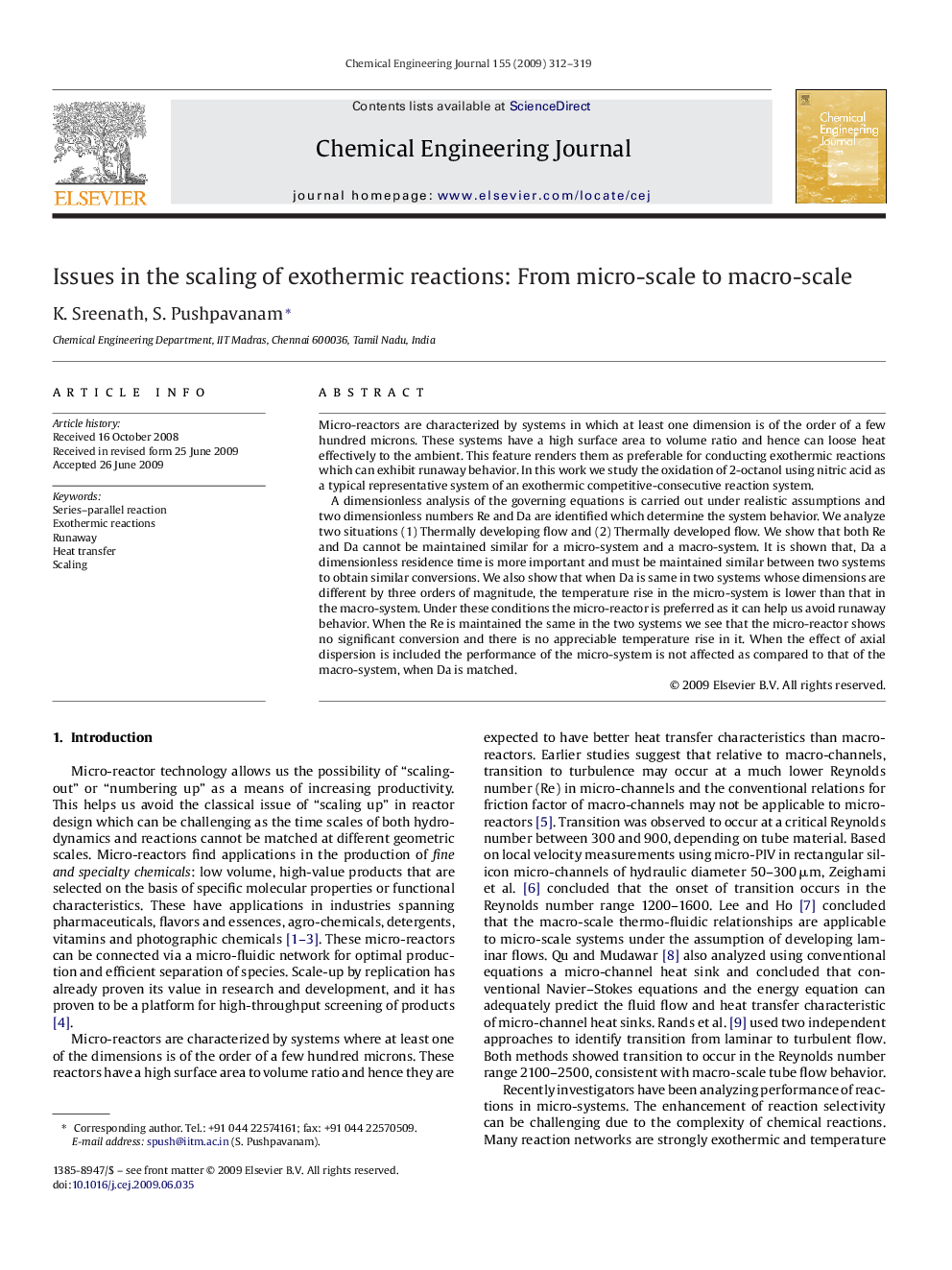| Article ID | Journal | Published Year | Pages | File Type |
|---|---|---|---|---|
| 153339 | Chemical Engineering Journal | 2009 | 8 Pages |
Micro-reactors are characterized by systems in which at least one dimension is of the order of a few hundred microns. These systems have a high surface area to volume ratio and hence can loose heat effectively to the ambient. This feature renders them as preferable for conducting exothermic reactions which can exhibit runaway behavior. In this work we study the oxidation of 2-octanol using nitric acid as a typical representative system of an exothermic competitive-consecutive reaction system.A dimensionless analysis of the governing equations is carried out under realistic assumptions and two dimensionless numbers Re and Da are identified which determine the system behavior. We analyze two situations (1) Thermally developing flow and (2) Thermally developed flow. We show that both Re and Da cannot be maintained similar for a micro-system and a macro-system. It is shown that, Da a dimensionless residence time is more important and must be maintained similar between two systems to obtain similar conversions. We also show that when Da is same in two systems whose dimensions are different by three orders of magnitude, the temperature rise in the micro-system is lower than that in the macro-system. Under these conditions the micro-reactor is preferred as it can help us avoid runaway behavior. When the Re is maintained the same in the two systems we see that the micro-reactor shows no significant conversion and there is no appreciable temperature rise in it. When the effect of axial dispersion is included the performance of the micro-system is not affected as compared to that of the macro-system, when Da is matched.
